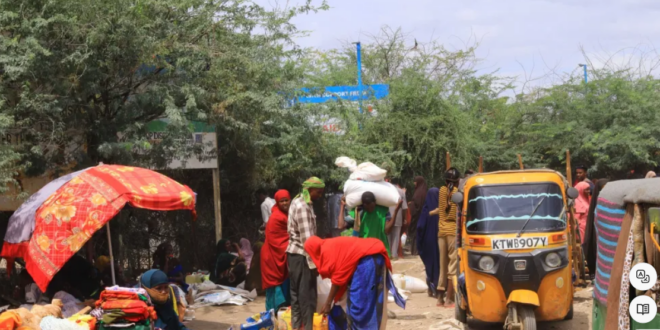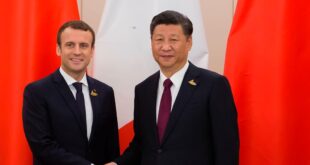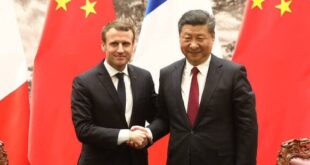Muhamad Yehia
The Kenyan government has announced a plan that could transform the lives of the more than 670,000 refugees sheltering in the country – ending a three-decade-old policy that has forced them to remain in isolated, overcrowded, and chronically underfunded camps.
Launched with fanfare last year, the Shirika plan aims to turn the country’s two huge camp complexes – Dadaab and Kakuma – into self-reliant integrated settlements, allowing refugees and host communities to live and work side by side, both benefiting from government services.
But while the vision of a progressive refugee policy is compelling, there are plenty of political, financial, and administrative hurdles in the way.
For a start, the government is still not clear on what form of ID refugees will need to access public services, and to allow them to move freely outside the camps – if indeed they will be allowed to travel beyond Garissa and Turkana counties where the two camps are located. Currently, refugees risk arrest if they are found outside the camps.
The authorities have also been silent on whether, or how, refugees can access work permits, a tricky political issue in a country where unemployment remains a huge concern.
There is no clarity either on what development programmes will be available as refugees transition from their dependency on ever-shrinking aid rations, and the government is yet to make any promises on whether the two counties will be granted additional funding to extend their already limited services to refugees.
Given the uncertainty, The New Humanitarian reached out to five refugees in Dadaab – Kenya’s largest camp – to ask whether the initiative was generating excitement or anxiety.
All five refugees, most of whom had lived in Dadaab nearly all their lives, complained that refugees hadn’t been consulted on the integration plan by the government – even though they were supposed to be its beneficiaries.
There were also misgivings that the government – which is yet to provide a definitive start date – was hyping the plan to attract donor funding rather than implementing legislation and doing the detailed policy work to make it succeed.
And there was a real worry that the initiative could create competition over jobs and benefits with host communities, stirring up latent tensions in both Garissa and Turkana, two of Kenya’s poorest regions.
The interviews were broadcast last week on Radio Gargaar, Dadaab’s radio talk show programme, and phone lines were quickly jammed with people calling in to share their views.
The show can be heard in the original Somali here.
The following are translated excerpts from the interviews.
On refugee life
“The word ‘refugee’ in itself is a hopeless word. It refers to someone without freedom, someone who is not living where they were born, somewhere foreign, somewhere that feels like being in prison.” – Fardosa Sirat, refugee women’s rights activist.
“You can define the refugee life in two ways: On one hand, it’s a golden opportunity, because when our country was destroyed, at a time when the situation was really bad, we were welcomed, got refuge, and different services. From that perspective, it’s an opportunity. On the other hand, it is an open-air prison, because we have no freedom to even go to even the nearest town outside Dadaab.” – Siyaad Aden, head of the Dadaab Refugee-Led Organizations Network (DARLON).
“As refugees, we are just waiting for our death. And the reason for that is we don’t see a pathway for leaving this refugee life. I married here, and my children were born here. And it seems like my kids will get married here and have their own kids here.” – Abdirazaq Kahiye, journalist.

On the lack of consultation over Shirika
“The things that I worry about is that firstly we will be just mere signatures. When people have already planned everything, at the very end, they’ll need signatures. When they bring us a complete plan, we’ll be forced to agree and sign it.” – Sirat
“Up until now, it is not clear to the refugees what the Shirika plan is. It is something organisations and the government have decided upon, even though it hasn’t been presented to the refugees. It would have been better before they came to a decision to consult the refugees as stakeholders, because they know what’s good for them and what’s not.” – Kahiye.
“Among the many fears we have regarding the Shirika plan is, when you hear the organisations and government talk about it, they say positive things. But things don’t always happen as they are said. It can be improved by including the refugee community in the meetings discussing this project.” – Anonymous*.
On the integration challenge
“We don’t know what the integration will look like. Will it be that we leave the camps and live as recognised refugees who have the right to independently move, living anywhere in the country, up to the borders of Uganda and Tanzania, without relying on any aid organisation? Or will we be still enclosed in the camps, and people will report that the Shirika plan has worked?” – Sirat.
“There’s the worry that [the plan] will create competition between [Kenyan] citizens of the area and refugees. I would say it can be made to work by making it fair and equal between the refugees living here, and the Kenyan citizens in terms of resources, employment opportunities, education, and so on.” – Aden.
“Being that the citizens here [in Garissa county] are Somalis, and we share the same religion, they still show us that they have more power than us simply because they have an ID. They deal with us in an arrogant and wrong manner. So, if they stop that, I think we can live well with each other. But if they continue discriminating against us, then it won’t be peaceful.” – Nasteho Hassan, works with refugees with disabilities.
“If I talk about the connection between citizens and refugees, the Shirika plan can bring competition. And this is part of the larger fear. Refugees have little capability. They don’t live in their country [of origin], so the citizens here can take advantage. But if things are done correctly, everyone will benefit.” – Anonymous.
On implementation of the plan
“The first way to advance the plan is to go back to the drawing board and involve the leaders of the refugees, meet them, and talk to them. Wherever they are discussing the Shirika plan, there needs to be representatives from the refugees because they know the pain of the refugees. Every point that is brought up, our representatives can say: ‘That doesn’t benefit us, replace it with something that benefits us’.” – Sirat.
“If it’s implemented in a good way as it is required and as it is written, it will be a project that comes with benefits. But if it is not implemented as it is written, and many hands become involved, and it is tampered with, then it will come with problems like grabbing, and conflict.” – Aden.
“Kenyan citizens and refugees have a fluctuating relationship. When they need us, they are good to us. But when they don’t need us, we encounter a lot of foulness. The Shirika plan will either bring progress and development, where everyone brings their talents, or it can create more discrimination and problems where people undermine each other. So, it depends on everyone and how they think and act.” – Hassan.
“Kenyan citizens have their rights, but we don’t have any representation. They have MCAs [Members of the County Assembly], MPs, a president and governors. But we have no one to represent us. The only representation we have is in [the UN refugee agency] UNHCR. Our representation starts there and ends there. And in any conflict, the one who will be affected is the refugee.” – Kahiye.
 موقع وجه أفريقيا موقع وجه أفريقيا هو موقع مهتم بمتابعة التطورات في القارة الأفريقية
موقع وجه أفريقيا موقع وجه أفريقيا هو موقع مهتم بمتابعة التطورات في القارة الأفريقية



